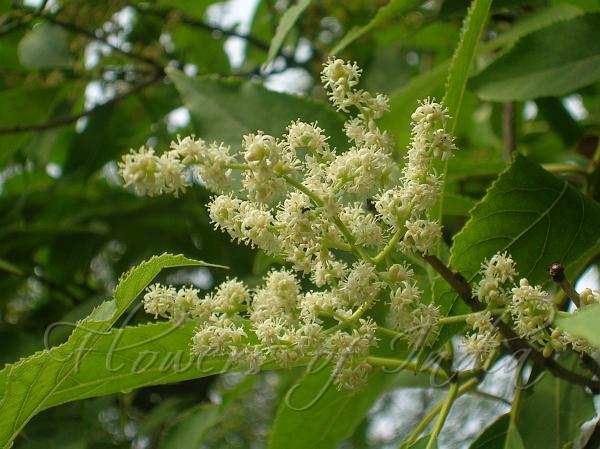|
| Koda Tree |
|

|

| File size | 988248 |
| Original date | 4/8/07 4:40 PM |
| Resolution | 2048 x 1536 |
| Flash | Flash did not fire, auto |
| Focal length | 14.9mm |
| Exposure time | 1/137s |
| Aperture | 4.6 |
| Focus Distance | |
| Metering Mode | Partial |
| Camera make | NIKON |
| Camera model | E3700 |
| Sensor type |
|
|
|
|
Photo: |
Botanical name: Ehretia acuminata Family: Boraginaceae (Forget-me-not family)
Synonyms: Ehretia serrata, Cordia thyrsiflora, Ehretia ovalifolia
Synonyms: Ehretia serrata, Cordia thyrsiflora, Ehretia ovalifolia
Koda Tree is a hardy, fast growing tree, usually
seen less than 10 m tall, bearing dense sprays of delicately scented,
white flowers in spring. Leaves elliptic to obovate or oblong-ovate,
5-13 × 4-6 cm, margin regularly serrate with teeth curved upward. Tiny
fragrant white flowers occur in panicles 8-15 cm long. Flowers are tiny
white bell shaped, with 5 spreading pointed petals. Flowers are
followed by large clusters of edible, sweet tasting, yellow-orange
berries in autumn, which are loved and eaten by birds. Tree is
spectacular in fruit as the whole canopy becomes covered with the
brightly colored berries. Trees may become deciduous in dry times.
Timber used for furniture and joinery. Plant in any well drained soil
which is rich in organic matter and apply a light dressing of organic
fertiliser in early spring. Keep well watered during dry poeriods. A
great shade and bird attracting tree for parks and home gardens.
Koda tree is found in Bhutan, India, Indonesia, Japan, Vietnam; Australia,
and in the Himalayas at altitudes of 100-1700 m.
| Identification credit: Tabish | Photographed in Delhi & Darjeeling distt. |
• Is this flower misidentified? If yes,